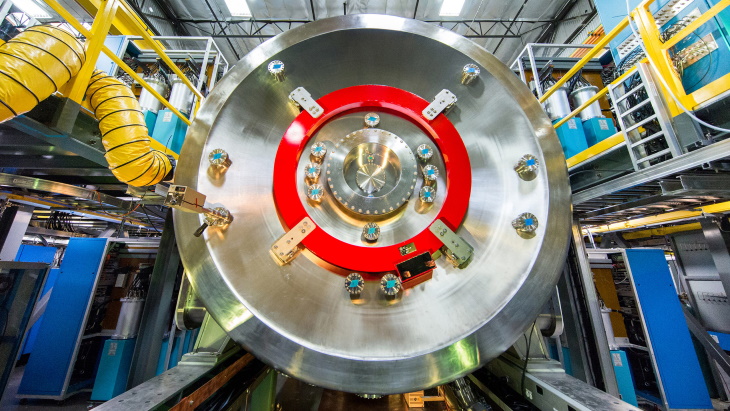TAE reaches 'hot enough' plasma milestone
TAE Technologies, the California, USA-based fusion energy technology company, has announced that its proprietary beam-driven field-reversed configuration (FRC) plasma generator has produced stable plasma at over 50 million degrees Celsius. The milestone has helped the company raise USD280 million in additional funding.

The Norman fusion device (Image: TAE Technologies)
Norman - TAE's USD150 million National Laboratory-scale device named after company founder, the late Norman Rostoker - was unveiled in May 2017 and reached first plasma in June of that year. The device achieved the latest milestone as part of a "well-choreographed sequence of campaigns" consisting of over 25,000 fully-integrated fusion reactor core experiments. These experiments were optimised with the most advanced computing processes available, including machine learning from an ongoing collaboration with Google (which produced the Optometrist Algorithm) and processing power from the US Department of Energy's INCITE programme that leverages exascale-level computing.
Plasma must be hot enough to enable sufficiently forceful collisions to cause fusion and sustain itself long enough to harness the power at will. These are known as the 'hot enough' and 'long enough' milestone. TAE said it had proved the 'long enough' component in 2015, after more than 100,000 experiments. A year later, the company began building Norman, its fifth-generation device, to further test plasma temperature increases in pursuit of 'hot enough'.
TAE said Norman nearly doubled its intended goals over an 18-month testing regime and has now demonstrated consistent performance of reaching 50+ million degrees Celsius, replicated over many hundreds of testing cycles - all in a compact machine that has very attractive economics when scaled up to a full power plant. With this most recent milestone, TAE has now unlocked the 'hot enough' conditions needed to scale to a reactor level performance.
TAE's approach to fusion combines advanced accelerator and plasma physics, and uses abundant, non-radioactive hydrogenboron (p-B11) as a fuel source. The proprietary magnetic beam-driven FRC technology injects high-energy hydrogen atoms into the plasma to make the system more stable and better confined. This solution is compact and energy efficient, TAE says.
The company said the latest milestone "confirms a key differentiator of TAE's patented technology: a positive relationship between plasma confinement and reactor temperature, meaning that the company's compact linear configuration improves plasma confinement as temperatures rise. By generating such stable high-temperature plasmas, TAE has now validated that the company's unique approach can scale to the conditions necessary for an economically viable commercial fusion power plant by the end of the decade."
Additional funding
TAE said the milestone furthers confidence in its path to commercialisation, and has aided the company in raising USD280 million in additional funding. When combined with prior rounds, TAE has now raised over USD880 million from investors.
Some of the capital will be used to begin development of a demonstration facility, called Copernicus, that will operate well in excess of 100 million degrees Celsius to simulate net energy production from the conventional Deuterium-Tritium (D-T) fuel cycle. Copernicus will provide opportunities for TAE to license its technology for D-T fusion, while scaling to its ultimate goal utilising p-B11.
TAE said some of the proceeds will also be used for the rapid commercialisation of TAE's Power Management technology, born out of the power delivery systems for its fusion projects. This technology will be used to extend the range, efficiency and faster charging of electric vehicles, as well as for deployment in residential, commercial, industrial and utility-scale electrical grid applications.
"The Norman milestone gives us a high degree of confidence that our unique approach brings fusion within grasp technologically and, more important, economically," said TAE CEO Michl Binderbauer. "As we shift out of the scientific validation phase into engineering commercial-scale solutions for both our fusion and power management technologies, TAE will become a significant contributor in modernising the entire energy grid."
Researched and written by World Nuclear News
- China Institute of Atomic Energy
- Nuclear Power Institute of China
- Southwestern Institute of Physics
- China Nuclear Power Operation Technology Corporation, Ltd.
- China Nuclear Power Engineering Co., Ltd.
- China Institute for Radiation Protection
- Beijing Research Institute of Uranium Geology (BRIUG)
- China Institute of Nuclear Industry Strategy (CINIS)
- China Nuclear Mining Science and Technology Corporation


